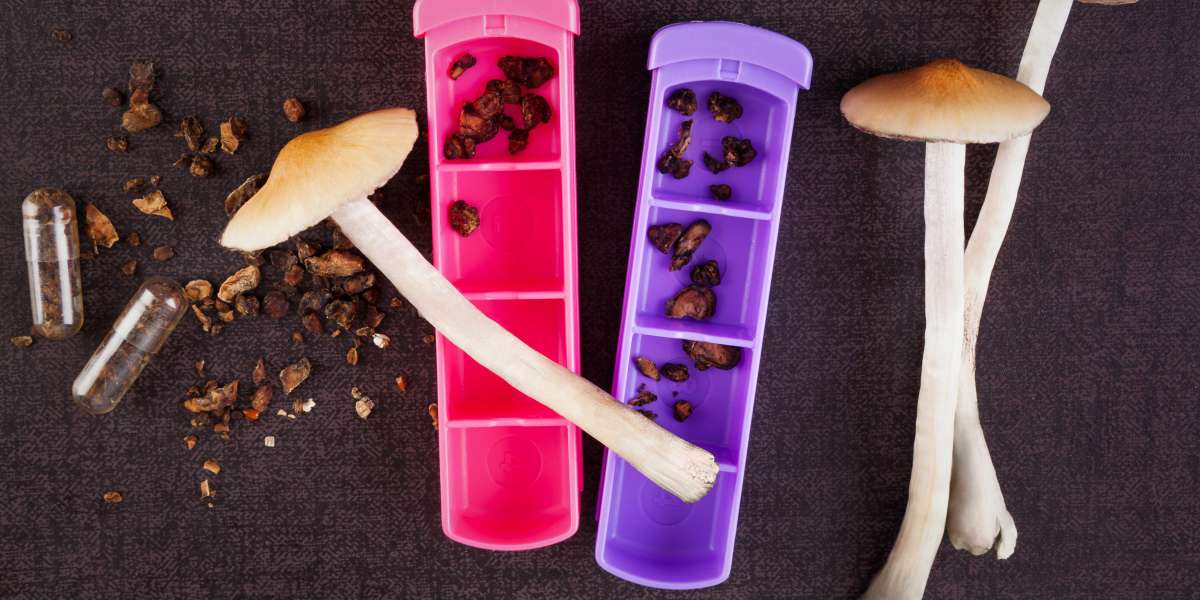A recent survey of more than a thousand participants from 59 countries suggests that Microdosing LSD increases energy, work efficiency, health habits and overall well-being. Some respondents reported that it helped relieve symptoms associated with migraines, premenstrual syndrome, traumatic brain injuries, herpes and depression.
Microdosing LSD
Microdosing is the act of consuming a subperceptive dose of a psychoactive compound. Many believe that consuming an extremely small dose produces some of the positive effects of the substance and, at the same time, continues to keep the user fully functional to perform all the activities of a normal day. A typical microdose is about one-tenth the amount of a standard dose.
Effects of LSD microdoses
LSD is one of the most popular substances for microdosing. Many users report an overall improvement in their health and well-being, both physiological and psychological. Common effects of LSD microdoses include increased energy, improvements in work effectiveness, and improved health habits. Some even report that they relieved their symptoms of migraines, premenstrual syndromes, traumatic brain injuries, and herpes.
Read also : Shrooms vs. Acid
How are LSD doses measured?
When LSD is consumed for a psychedelic experience, most users will measure their LSD dose by the number of cartons, or pieces of blotting paper. However, this is a relatively ineffective measurement method, as a single piece of blotting paper can contain very different amounts of LSD.
A more accurate way to measure it is by microgram. It can be difficult to find a reliable source that knows how many micrograms of LSD are in each carton. A standard dose for inducing a psychedelic experience ranges from 50 to 150 micrograms. When microdosing, most users consume one-tenth of the normal dose, between 5 and 15 micrograms.
LSD Dosage Table
- Limit: 10 – 20 micrograms
- Light: 20 – 75 micrograms
- Common: 50 – 150 micrograms
- Strong: 150 – 400 micrograms
- Extreme: more than 400 micrograms
Common clinical research doses
The investigational doses of LSD depend on the purpose of the study. In the last 25 years, scientists have conducted six studies with doses ranging from 40 micrograms to 200 micrograms.
How much LSD causes an overdose?
While LSD LD50 is still unknown to humans (an overdose has not yet been reported), it is safe to assume that it would be far above what any user would consume for recreational purposes.
In one case, eight individuals accidentally consumed more than 40,000 micrograms of LSD, about 400 times the normal dose, thinking it was cocaine. Although all eight were admitted to a hospital, all were discharged within 48 hours. Five of these patients were followed a year later and found to have no residual effects after the experience.
What is considered a microdose of LSD?
A microdose of LSD is considered a subperceptual dose, meaning the effects are mostly imperceptible. How much this dose would be is very subjective depending on the individual.
Fadiman's protocol recommends a dose between one-tenth and one-twentieth of a normal daily dose, with each fourth day sautéed. This prevents a tolerance from accumulating and allows to subjectively determine the effects compared to a day of sick leave and a day of microdosing.
How to microdose LSD
The most popular method of microdosing LSD is known as the Fadiman protocol, named after the man who created it, James Fadiman. Fadiman created this method to study the effects of microdosing on a wide range of individuals through a controlled methodology. For LSD, it involves consuming between 5 and 10 micrograms every three days. This allows for a baseline on the third day, to compare how microdosing has affected you and whether or not it is beneficial to your specific situation.
Fadiman encourages anyone trying this method to inform him of their results so that he can compile them and hopefully continue to encourage research in this area based on those results. Their page also provides a quick set of five questions that makes reporting your experiences even easier.
Read also : LSD: The Ultimate Guide
How LSD works inside your body
The basic mechanism of how LSD produces its effects involves the substance binding to serotonin receptors in the central and peripheral nervous system. These receptors are called 5-hydroxytryptamine receptors, or 5-HT. LSD binds to most types of these receptors, except for 5-HT3 and 5-HT4 receptors. The most important receptor it binds to, which produces most of its effects, is called the 5-HT2A receptor. This causes a cross-activation of the heteromers of this receptor which is thought to produce the psychedelic effect.
Effects of LSD
When consumed in large doses, LSD produces a profound psychedelic effect that involves:
- Visual effects with closed and open eye
- Dilated pupils
- Reduced appetite
- Euphoria
- Intense emotions
- An altered sense of reality
Small doses of LSD, called "microdoses," produce none of these strong effects. A true microdose should not produce any very noticeable acute effects, but rather a psychological and social benefit. These effects may include increases in:
- Vitality
- Creativity
- Social ability
- Approach
- Analytical thinking
- Positive mood
- Memory
- Conscience
- General well-being
What to Know Before Taking an LSD Microdose
The most important part of consuming any substance safely is making sure that the substance being consumed is pure. The psychedelic community commonly uses an Ehrlich reagent test to rule out the most common LSD substitutes. This test involves placing a small drop of an Ehrlich reagent in a portion of the substance you have. The reagent turns purple when in the presence of indoles, which is what LSD is. This will rule out a common and dangerous LSD substitute called 25i-NBOMe.
Common interactions when microdosing LSD
The biggest concern as to how LSD interacts with other substances comes from the knowledge of what might happen when mixed with lithium or any other tricyclic antidepressant. This combination has the potential to cause severe seizures.
Another interaction that is of concern is with any SSRI, due to the increased chances of inducing serotonin syndrome. Serotonin syndrome is a life-threatening disorder caused by serotonin overload.
Finally, benzodiazepine tends to decrease the effectiveness of LSD. Remember that there are more than 15 different types of benzodiazepine drugs. If you are taking any medication, it would be advisable to consult a doctor before consuming a psychedelic substance.
Security Concerns
There are potential safety concerns when microdosing LSD for individuals with pre-existing heart conditions. This concern stems from vasoconstriction caused by most psychedelics, including LSD. It also tends to disrupt an individual's heart rhythm, which can cause complications with an existing heart condition.
The history of microdosing
When it comes to microdosing, there is very little history in terms of scientific studies. No formal research was conducted before 1966, when the ban on psychedelic research was established in most of the Western world. Recently there has been interest in microdosing, as some scientists try to obtain results from the experiences of users, and others try to conduct clinical studies.
Why do people microdose?
Most people try microdoses of psychedelics to improve their creativity, energy levels, emotional stability, and to relieve symptoms of anxiety, depression, and addiction.
What the psychedelic community says
The psychedelic community considers that there is a wide range of benefits of microdosing LSD.
A user suffering from anxiety and depression tried microdosing 30 micrograms a day for a week to see if that could help relieve some of his symptoms. He was also a frequent user of a wide variety of substances. During this week of testing, he felt a lower desire to consume other substances, and less stress throughout his work days. However, in his report, he says he is not sure whether this was due to a placebo effect or to the actual effects of microdosing LSD.
Other users took microdoses for thirty days, skipping every three days or so. He reported having more creative problem-solving tools, but it didn't help him work on healthy routines in his day, such as a regular sleep schedule or healthy eating habits.
What the scientific community says
The first step in making scientists understand the effects of microdosing is to determine which dose constitutes a "microdose," and the acute effects of the dose over time.
An all-new study published on November 15, 2019 sought to find this dose. They used three doses: 6.5 micrograms, 13 micrograms and 26 micrograms in a double-blind, placebo-controlled study of 20 young adult saints. This study finds that 13 micrograms would likely be a safe dose to study further with repeated administrations. No further studies have yet been conducted based on these conclusions, but this study paves the way for future research into the potential benefits and consequences of regular microdosing of LSD.
Read also : Psychedelic Microdosing: The Ultimate Guide
What the critics say
With the increased attention that the media has paid to microdosing, there have also been critics of the practice who have pointed out possible drawbacks. The main point that most such critics are emphasizing is regarding the microdosing of DMT, but these effects could be apparent in the microdose of LSD as well.
They always refer to a study published by the ACS, which found that DMT microdosing affected metabolism and neuronal growth in rats. Male rats tended to gain a significant amount of weight and female rats developed neuronal atrophy. It is not yet known whether these effects would appear in humans.
Where do I buy LSD for microdosing?
As microdosing continues to gain popularity throughout the Western world, certain companies are starting to offer microdose kits to help the average user measure a dose, make sure their LSD is pure, and offer legal alternatives. These kits usually contain an amber glass bottle, a medicinal syringe, and an Ehrlich reagent test.
Is microdosing LSD legal?
LSD is a controlled substance in most of the modern world. The United States included it in Schedule I of controlled substances under the Controlled Substances Act of 1970. The United Nations Convention on Psychotropic Substances also lists LSD requiring all members of the United Nations to ban LSD. However, Mexico has legalized the possession of extremely small amounts, less than 15 micrograms. Portugal also decriminalized LSD in 2001.







